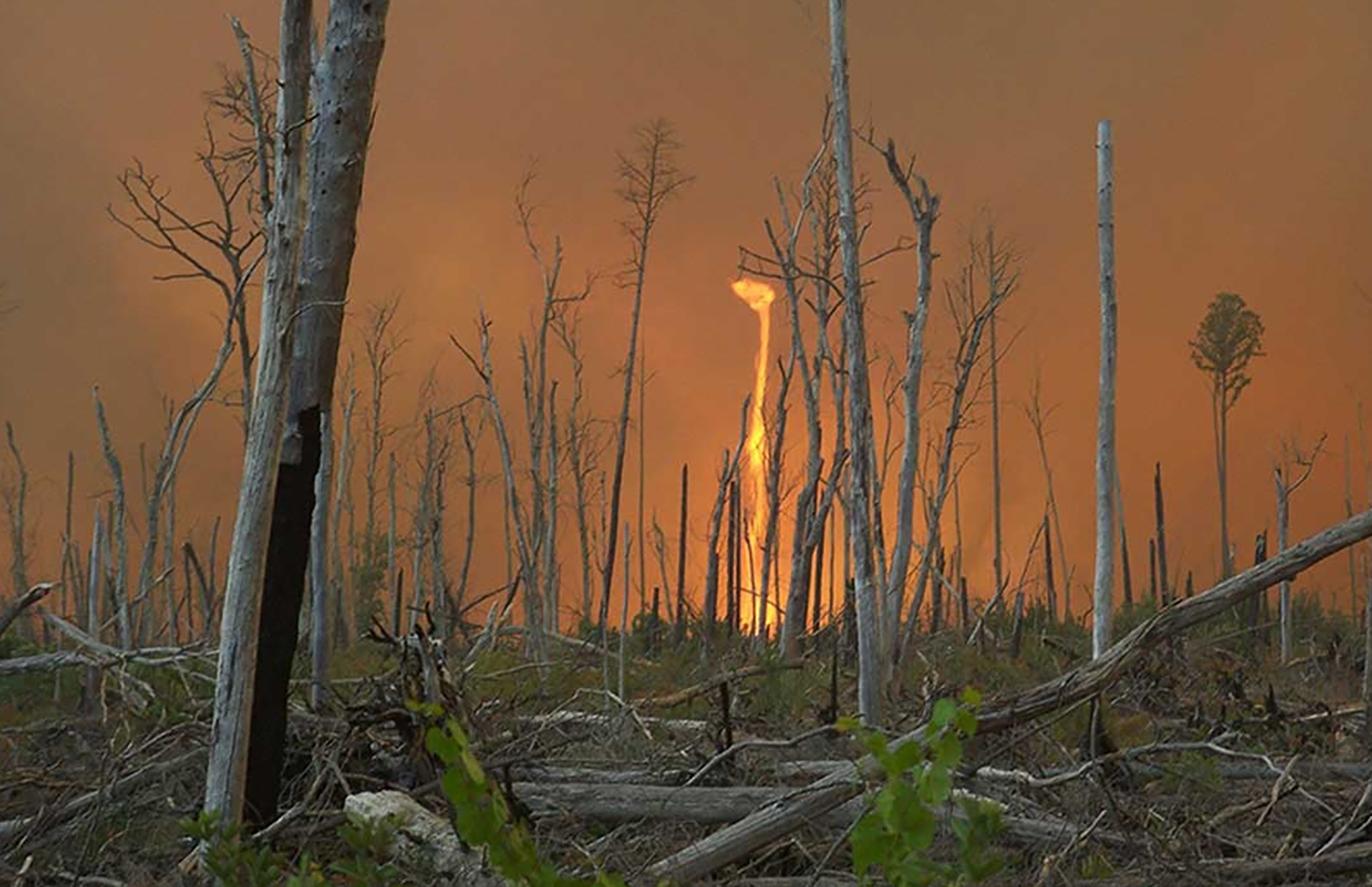
A fiery vortex spinning across the land and threatening infrastructure with the one-two punch of high winds and flames is not just the stuff of nightmares or movies, as in the recent screen thriller Twisters. Instead, it is a real but rare phenomenon that represents one of the “potential future hazards for infrastructure that civil engineers need to think about,” noted David Odeh, P.E., S.E., F.SEI, F.ASCE, a senior vice president and national director at WSP USA Building Structures.
Odeh discussed the potential threat from so-called fire tornadoes in his keynote address at SEICon24 in San Antonio in March. Fire tornadoes are “a cyclone generated by a forest fire due to the heat and thermodynamic effects of the fire,” Odeh explained. But not every forest fire is likely to create a fire tornado. Instead, the conditions generally require enormous fires that are so hot they create their own weather systems because of “all the moisture from trees and other fuel being burned” that is “vaporized and sucked up into the upper atmosphere,” Odeh said.
Further reading:
- Model estimates 30-year wildfire risks for US properties
- How civil engineers can help with wildfire prevention and preparedness
- Wildfires pose growing threat to drinking water systems
The result is “a massive heat exchange in the atmosphere … like a new type of weather that forms because of that heat exchange,” explained Odeh, who first learned about fire tornadoes in the book Fire Weather: A True Story from a Hotter World, by John Vaillant (New York City: Alfred A. Knopf, 2023).
A new kind of fire
Vaillant’s book focuses on the devastating Fort McMurray fires in Alberta in 2016 as well as an event near the Australian capital of Canberra in 2003, which featured what might have been the first documented video of a tornado generated by a wildfire. The Canberra fire tornado was so powerful it ignited “an area of roughly three hundred acres … in less than a tenth of a second,” Vaillant wrote.
The author dubbed this “new kind of fire” a “pyro-tornadogenesis,” but fire tornadoes go by other names as well, including fire whirls, firestorms, and even firenadoes. A climatology report on the Library of Congress website concedes that the “terminology can be confusing – and not even the experts always agree on the differences between these phenomena.”
Vaillant links wildfires and fire tornadoes to the hotter world caused by climate change, noting that each Celsius degree of warming produces a 12% increase in lightning, which is a major cause of the wildfires that “generate fire whirls, tornadoes, and more lighting, resulting in yet more fires.”
Not yet understood
The threat of fire tornadoes has not yet burned its way deep into the public’s consciousness. A quick internet search on the term “fire tornado” reveals many news reports and other commentaries aimed at convincing people that such events, while rare, are real. But in fact, the history of fire tornadoes has been documented for more than 150 years, beginning with the Great Peshtigo Fire in Wisconsin in 1871, which featured a “firestorm” with wind speeds of more than 100 mph, according to the Library of Congress website.

Similar events included flaming vortexes that struck Tokyo after a 1923 earthquake; a five-day-long fire event in San Luis Obispo, California, in 1926 that produced “numerous whirls and at least one tornado”; and the 2018 Carr Fire in Northern California, which generated a vortex that “spun with the power of an EF-3 tornado and rose 17,000 feet above Earth,” according to the Library of Congress.
Odeh believes that civil engineers must take leadership roles in making infrastructure more resilient and future ready by considering new types of hazards that are emerging from our changing climate. “The increasing frequency and severity of wildfires and their collateral weather effects, including fire tornadoes, result in elevated risk to the built environment,” he explained. “We need to research the nature of these hazards and decide if and how they should be considered in design.”
Thanks to a recent revision of the ASCE 7 standard Minimum Design Loads and Associated Criteria for Buildings and Other Structures, civil engineers now have some design criteria that consider the wind loads from regular tornadoes, which were included in the standard for the first time in 2022. So, it “seems a logical conclusion” to consider a combination of “a fire event plus some very large wind speeds” when designing the most critical, highest-risk category buildings in areas of high wildfire risk, Odeh said.



